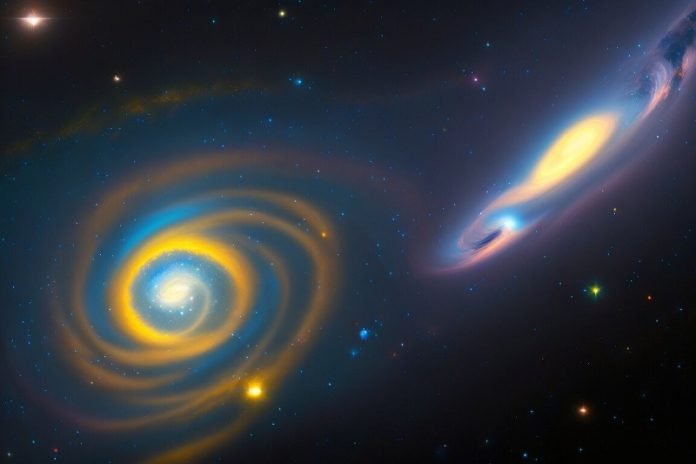
Think about the sky on a clear night, filled with countless twinkling stars.
Now, imagine if you could use these stars to measure the distance between us and far-off galaxies.
Sounds like a scene from a science fiction movie, right?
Well, astronomers from China are making it real, using a unique kind of star known as double-period RR Lyrae (RR Lyr) stars.
Let’s break it down a little. RR Lyr stars are special stars that change their brightness over time. These stars are like the grandparents of our universe, being over twice as old as our sun and shining 100 times brighter.
Approximately 5% of these RR Lyr stars are even more special, pulsating at two different rates. These are the double-period RR Lyr stars.
Now, why does this matter?
The brightness of RR Lyr stars is related to their pulsating period (how quickly they change in brightness) and their elemental abundance (what they’re made of). This relationship helps astronomers determine the distance between us and the galaxies these stars inhabit.
But these double-period RR Lyr stars add a twist. Their two periods of pulsation can give us a measure of the elemental abundance, creating a new way to figure out their luminosity, and hence their distance from us.
According to Dr. Chen Xiaodian, the main researcher, this method is like getting two for the price of one. You measure the periods, and you get the distance and the elemental abundance all at once!
The best part is, it’s easier to measure the period of these stars than their elemental abundance. That means this new method will allow us to measure the distance to nearby galaxies using just photographs, without needing any fancy spectroscopic observations.
Dr. Deng Licai, a senior researcher and co-author of the study, explains this could increase the number of galaxies we can accurately measure distances to by 20 times or more.
In the next few years, the China Space Station Telescope and the Vera C. Rubin Observatory are expecting to spot tens of thousands of these double-period RR Lyr stars in nearby galaxies.
So, not only will we be able to map the local group of galaxies in 3D but we will also get a more accurate Hubble constant – a number that tells us how fast the universe is expanding.
This exciting discovery makes looking at the night sky even more amazing. Who knew the twinkling stars could help us unlock the secrets of the universe?
Their study was published in Nature Astronomy.



